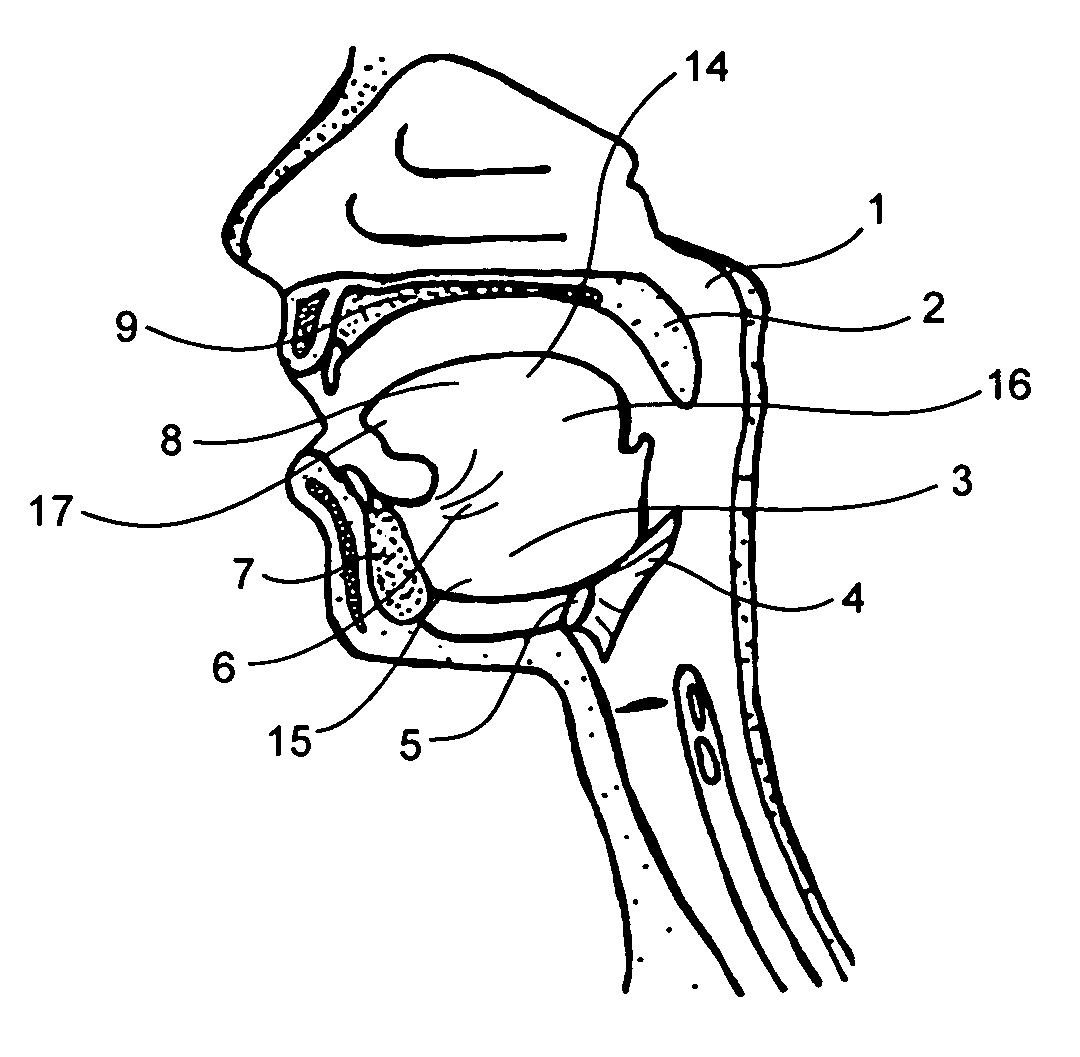System to prevent airway obstruction
- Summary
- Abstract
- Description
- Claims
- Application Information
AI Technical Summary
Benefits of technology
Problems solved by technology
Method used
Image
Examples
Embodiment Construction
[0023] Devices and methods are provided for the treatment of obstructive sleep apnea. In the methods of the invention, an implantable device is inserted into the tongue to prevent obstruction of the airway. The device is implanted such that the anterior end is positioned in the root of the tongue, and the posterior end lies in the base of the tongue or towards the tip of the tongue, without attachment to a hard tissue. The implantable device is a flexible elongated structure, which may be a straight, curved or jointed filament; of a sufficient length and diameter to provide support, when implanted, that is sufficient to restrain obstructive movement of the tongue during sleep.
[0024] The following description of preferred embodiments of the invention is not intended to limit the invention to these embodiments, but rather to enable any person skilled in the art to make and use this invention.
[0025] As used herein, the term “obstructive sleep apnea” in a human patient refers to episo...
PUM
 Login to View More
Login to View More Abstract
Description
Claims
Application Information
 Login to View More
Login to View More - R&D
- Intellectual Property
- Life Sciences
- Materials
- Tech Scout
- Unparalleled Data Quality
- Higher Quality Content
- 60% Fewer Hallucinations
Browse by: Latest US Patents, China's latest patents, Technical Efficacy Thesaurus, Application Domain, Technology Topic, Popular Technical Reports.
© 2025 PatSnap. All rights reserved.Legal|Privacy policy|Modern Slavery Act Transparency Statement|Sitemap|About US| Contact US: help@patsnap.com



